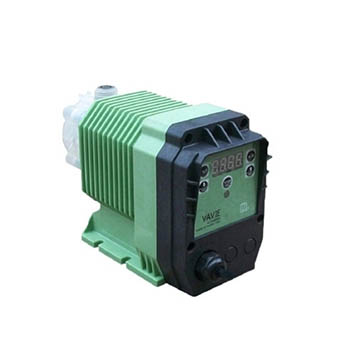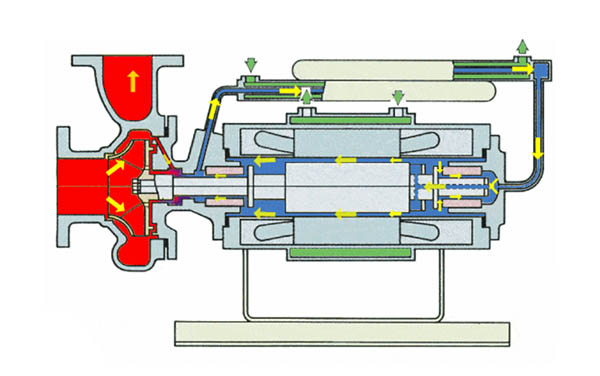How to Install Diaphragm Dosing Pump?
I believe everyone knows that due to the isolation effect of the diaphragm, the structure of the dosing pump truly realizes the isolation between the metered fluid and the driving lubrication mechanism. Therefore, with the rapid development of the current economy, the demand for diaphragm dosing pumps is increasing in some industries, such as chemical, food, environmental protection, petroleum, and other industries. The dosing pump is compact in structure, safe and reliable. The pump can not only deal with various corrosive chemicals on the pumped medium but also meet hygienic requirements. Next, ATO will explain to you the correct installation method for the dosing pump.
Installation height
The dosing pump should be installed on the concrete 300-500mm higher than the ground, or on a solid base, and the dosing pump should be calibrated in a horizontal state. At the same time, the installation of the pump should take the interphase coupling of the pump as the calibration benchmark, the concentricity deviation should not exceed 0.15mm (elastic coupling), the steel coupling should be within 0.05mm, and there should be no sharp bends (not greater than 90º), and parts that bend and increase resistance in the pipeline should be minimized.
Do not install the pump and tank in direct sunlight. If it needs to be installed on the medicine barrel, it should not be higher than 1.5M.
Because it is larger than this value, it will affect the suction of the dosing pump. Due to the need for equipment maintenance and inspection, please place it in a more spacious place. Do not install where it is easy to touch moisture or corrosive gas. The ambient temperature of the pump installation should be kept at -20°C~40°C, and the altitude should be below 1000M above sea level.
Suction pipe diameter
The diameter of the suction line must be larger than the dosing pump inlet valve size. The attached pipe fittings can be tightened by hand. It does not use raw material tape at the thread. Motor wiring must refer to the motor nameplate and operating instructions, disconnect the outlet pipeline of the dosing pump, or open the exhaust valve of the pipeline. Add lubricating oil according to the oil level indication, and then adjust the stroke to 0%. Then start the dosing pump again. At this time, pay attention to distinguish whether there is abnormal noise in the pump body.
Adjust stroke
Gradually increase the stroke to the maximum, and then observe whether there is material delivery at the outlet of the dosing pump, and the flow rate changes with the stroke adjustment. Close the line vent valve or connect the outlet line and add material to the system. The installation environment should be kept clean and spacious with good ventilation. The suction end of the pump is lower than the critical liquid level of the liquid storage tank so that the liquid suction end of the pump is directly poured into the liquid medicine. In order to reduce the loss of the suction pipeline of the dosing pump, the installation position of the diaphragm dosing pump should be as close as possible to the solution tank.
Avoid the generation of negative pressure liquid suction condition (suction lift), which will affect the measurement accuracy and affect the accuracy of measurement. The height of the suction lift of the pump is directly related to the structure of the pump, the characteristics of the material medium (density, viscosity, etc.), and the pipeline characteristics. If you want to know the targeted data, you need to provide the pump model, material characteristics, and system parameters, and the calculation will be assisted by professionals.
Inlet pipe length
Excessive length of the inlet pipeline of the pump will cause loss of pressure in the inlet pipeline, resulting in cavitation and reducing the service life of the pump. It is reasonable to increase the length of the outlet pipeline and reduce the length of the inlet pipeline. Secondly, the dosing pump should be installed according to the size specification. The wrong installation will cause the gas volume pressure in the elbow, and the liquid cannot be sucked normally. If there is a bend at the top of the inlet pipeline, the position of the inlet pipeline needs to be changed, and the inlet pipeline is led out from the bottom of the solution tank, or a bottom valve is added at the bottom of the dosing pump inlet pipeline by lifting installation.

Maintenance of air pressure difference
Ensure sufficient pressure difference between the outlet and inlet of the dosing pump. If the pressure difference is not enough, the liquid will flow from the inlet to the outlet when the pump is stopped. At this time, the normal operation is to install a back pressure valve in the outlet pipeline of the dosing pump, and artificially establish a pressure difference in the outlet pipeline of the dosing pump to prevent the occurrence of siphon phenomenon.
The pulsation damper needs to be installed correctly. If the installation does not meet the corresponding standards, the buffer will not be able to work effectively, and the pipeline pulse will not be eliminated, resulting in flow fluctuations and affecting the measurement accuracy. It is necessary to exchange the installation positions of the pulsation damper and the back pressure valve and install the pulsation damper between the back pressure valve and the outlet of the dosing pump.
Suction line diameter
The diameter of the suction pipeline should not be less than the diameter of the suction valve, and the length of the suction pipeline should be shortened as much as possible. 1-2 meters is appropriate. If it is necessary to increase the length, the length should not exceed 4 meters (at this time, the corresponding filter valve should be installed, but the time for inhaling liquid when starting is relatively extended). The pipeline connection with the suction and discharge valves cannot be forcibly combined to increase the load on the pump valve, and the weight of the pipeline and valves must not be borne by the pump and suction and discharge valves. After the pipeline is installed, the pipe fittings should be supported and fixed.
Increase of pipeline flux by special liquid
For conveying suspensions and media that are prone to sedimentation, valves, and tees should be added near the suction and discharge of the pump, so that the cylinder body can be flushed without disassembling the pipeline when the pump is stopped. In order to ensure the safe operation of the pump and the safety of the pipeline system, it is recommended to install a safety valve on the discharge pipeline. If the pressure at the outlet of the pump is unstable, it is recommended to install a back pressure valve.
Check to make sure that the dosing pump is firmly installed on the machine base, the pipeline is installed correctly, and the outlet pipeline is open. If there is no lubricating oil in the pump body, add enough lubricating oil to the pump body. Before the pump is powered on, the flow adjustment handwheel is at zero scale. Before the flow adjustment handwheel increases from zero scale, check the suction and discharge lines to ensure that all stop valves are open.
Start the dosing pump and check the rotation direction of the motor. The rotation direction must be consistent with the arrow on the motor mounting flange (clockwise rotation when viewed from the fan blade side of the motor). If the steering is incorrect, the wiring should be changed. It is strongly recommended that the pump should be stopped when the temperature is below -10°C.
Pump start-up and manual flow adjustment
Once the inspection of the above requirements is completed, the dosing pump can be started, pay attention to observe and listen to the dosing pump. Loosen the stroke locking bolt on the pump adjustment base to adjust the pump flow, and adjust the thousandth scale stroke adjustment knob to change the pump flow.

